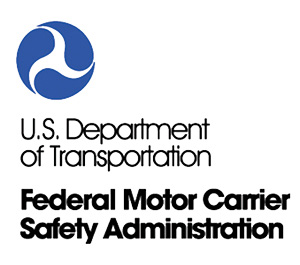Senior Reporter
FMCSA Takes Steps to Expedite Apprentice Driver Pilot Program

[Stay on top of transportation news: Get TTNews in your inbox.]
Federal trucking regulators are seeking emergency White House approval to take a first step toward a driver apprenticeship program included in last year’s sweeping $1 trillion infrastructure bill as a near-term measure to help alleviate the trucking industry’s ongoing driver shortage.
The DRIVE-Safe Act, included in the Infrastructure Investment and Jobs Act signed by President Joe Biden in November, creates an apprenticeship program under which drivers younger than 21 can drive commercial vehicles interstate. Previously, under-21 drivers were limited to intrastate operations.
In a Jan. 7 Federal Register announcement, the Federal Motor Carrier Safety Administration said it is seeking emergency authorization from the Office of Management and Budget to initiate data collection from motor carriers for the pilot apprenticeship program. FMCSA is asking OMB to act by Jan. 13.
FMCSA Apprenticeship Program Request by Transport Topics on Scribd
“The request for emergency OMB approval was issued to help meet deadlines for establishing the apprenticeship program outlined in the bipartisan infrastructure law, also known as the Infrastructure Investment and Jobs Act,” said an FMCSA spokesperson. “At this time, nothing is being requested from the motor carriers. This ICR is informing the public of the information collection and the opportunity to comment.”
Throughout the program, FMCSA wants to collect data regarding:
- The findings and conclusions on the ability of technologies or training provided to apprentices as part of the pilot program to successfully improve safety;
- An analysis of the safety record of participating apprentices as compared to other CMV drivers;
- The number of drivers that discontinued participation in the apprenticeship program before completion;
- A comparison of the safety records of participating drivers before, during and after each probationary period; and
- A comparison of each participating driver’s average on-duty time, driving time and time spent away from home terminal before, during and after each probationary period.
Plans for the pilot would only allow employment of drivers that already hold intrastate commercial driver licenses, and would require carriers to ensure that participating drivers follow a strict training regimen and be monitored by their employers.

The industry is hopeful that the pilot could lead to an increased supply of drivers to help plug critical truck driver shortages. FMCSA estimates that 4,500 motor carriers would seek to enroll more than 40,000 drivers in the pilot.
Plans call for the pilot to require apprentices to complete two probationary periods, during which they may operate in interstate commerce only under the supervision of an experienced driver in the passenger seat. An experienced driver must be 26 or older who has held a CDL and been employed for at least the past two years and who has at least five years of interstate CMV experience.
The first probationary period must include at least 120 hours of on-duty time, of which at least 80 hours are driving time in a CMV. To complete this probationary period, the employer must determine competency in:
- Interstate, city traffic, rural 2-lane and evening driving.
- Safety awareness.
- Speed and space management.
- Lane control.
- Mirror scanning.
- Right and left turns.
- Logging and complying with rules relating to hours of service.
- The second probationary period must include at least 280 hours of on-duty time, including not less than 160 hours driving in a CMV. To complete this probationary period, the employer must determine competency in:
- Backing and maneuvering in close quarters.
- Pre-trip inspections.
- Fueling procedures.
- Weighing loads, weight distribution and sliding tandems.
- Coupling and uncoupling procedures.
- Trip planning, truck routes, map reading, navigation and permits.
After completion of the second probationary period the apprentice may begin operating CMVs in interstate commerce unaccompanied by an experienced driver.
In addition to data regarding successful completion of the probationary periods, the program requires data collection for data relating to any incident in which a participating apprentice is involved as well as other data relating to the safety of apprentices.
“Additional data will include crash data (incident reports, police reports, insurance reports), inspection data, citation data, safety event data (as recorded by all safety systems installed on vehicles, to include advanced driver assistance systems, automatic emergency braking systems, onboard monitoring systems, and forward-facing and in-cab video systems) as well as exposure data (record of duty status logs, on-duty time, driving time and time spent away from home terminal). This data will be submitted monthly through participating motor carriers,” FMCSA said.
Want more news? Listen to today's daily briefing below or go here for more info:


